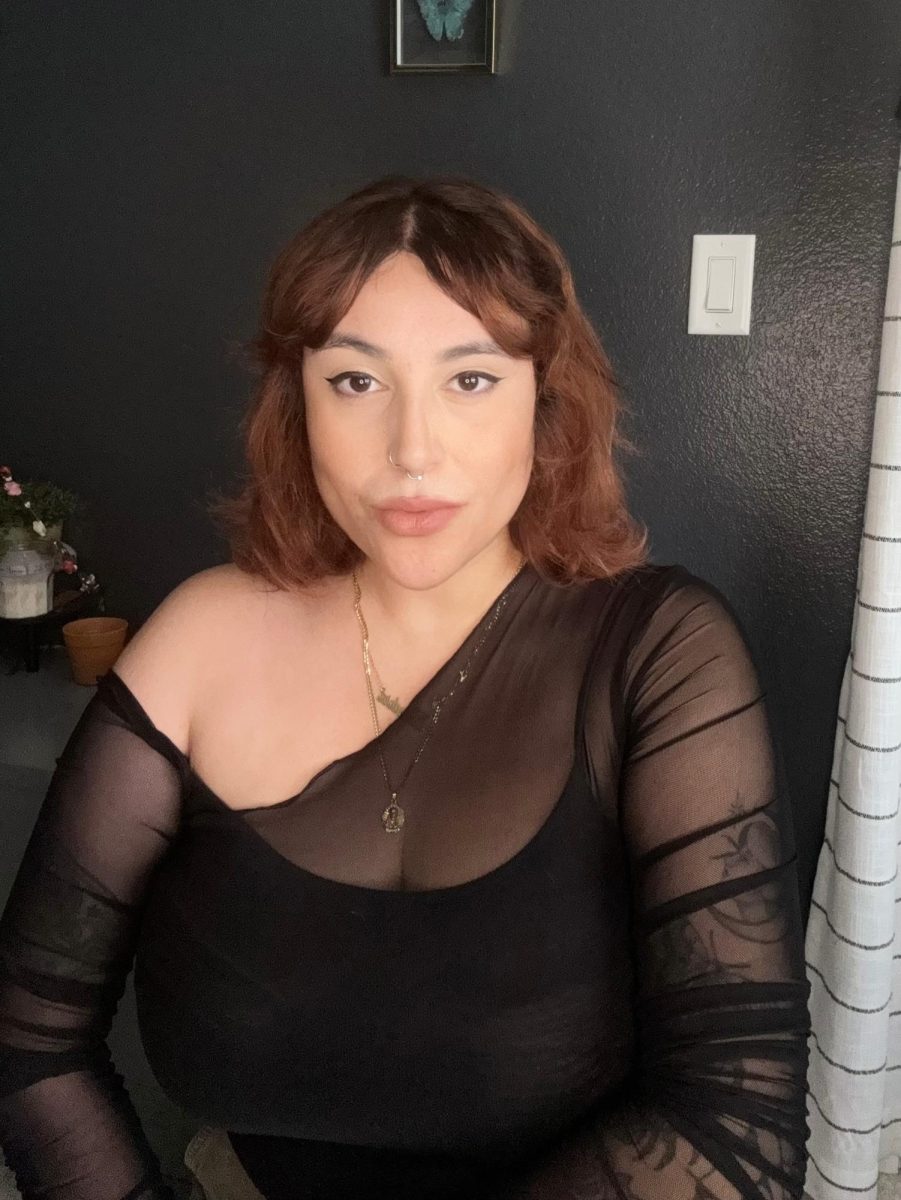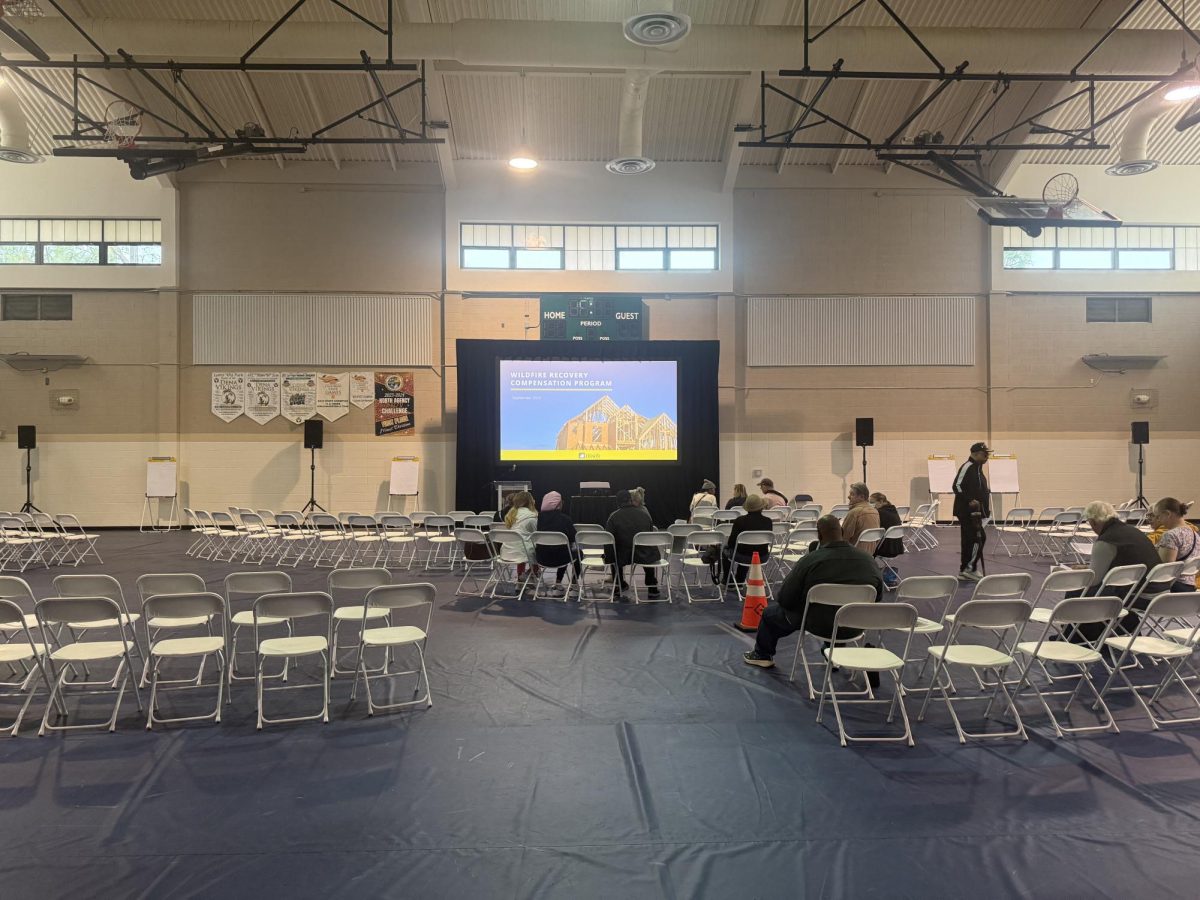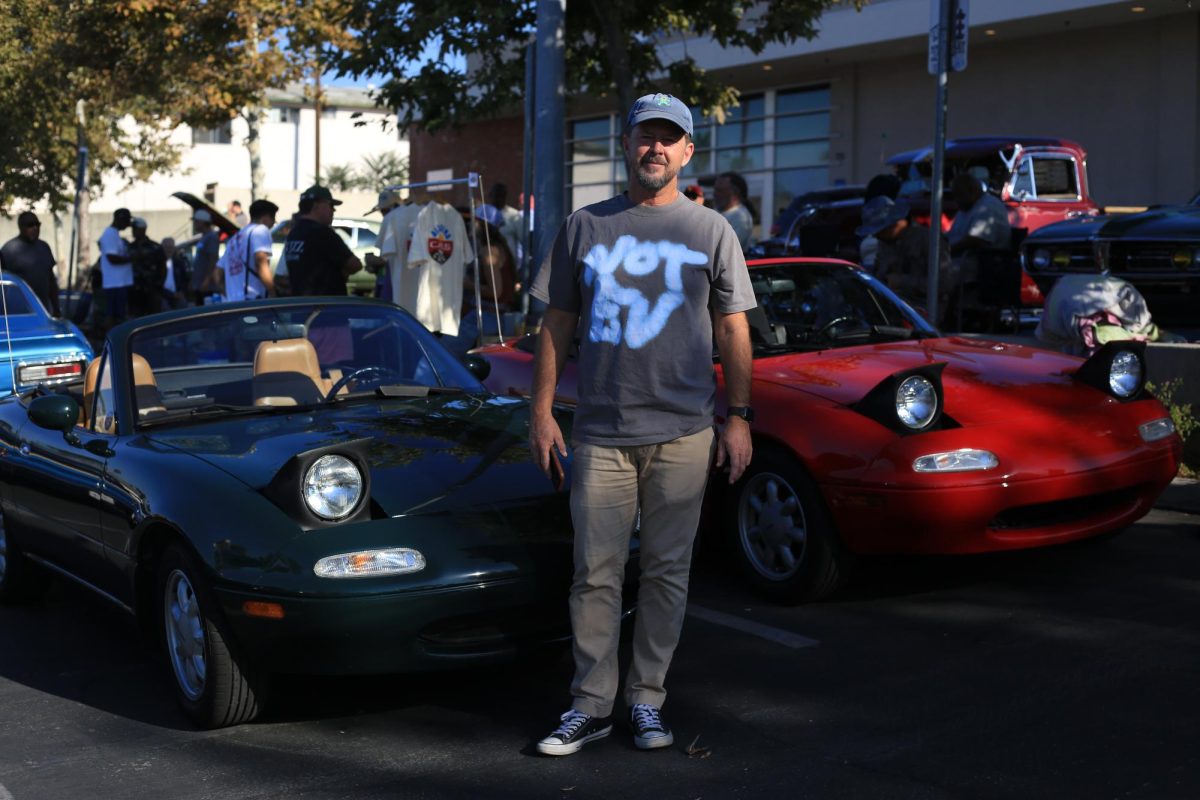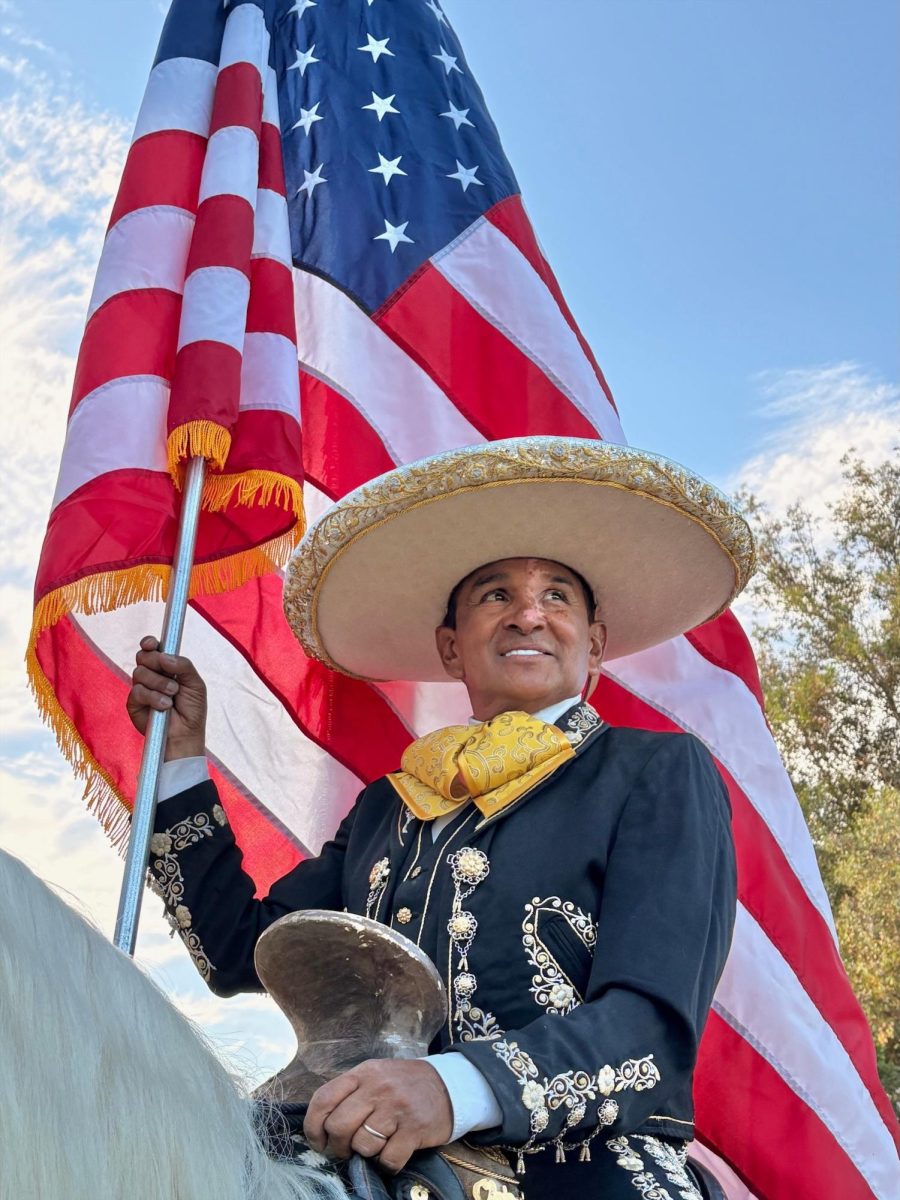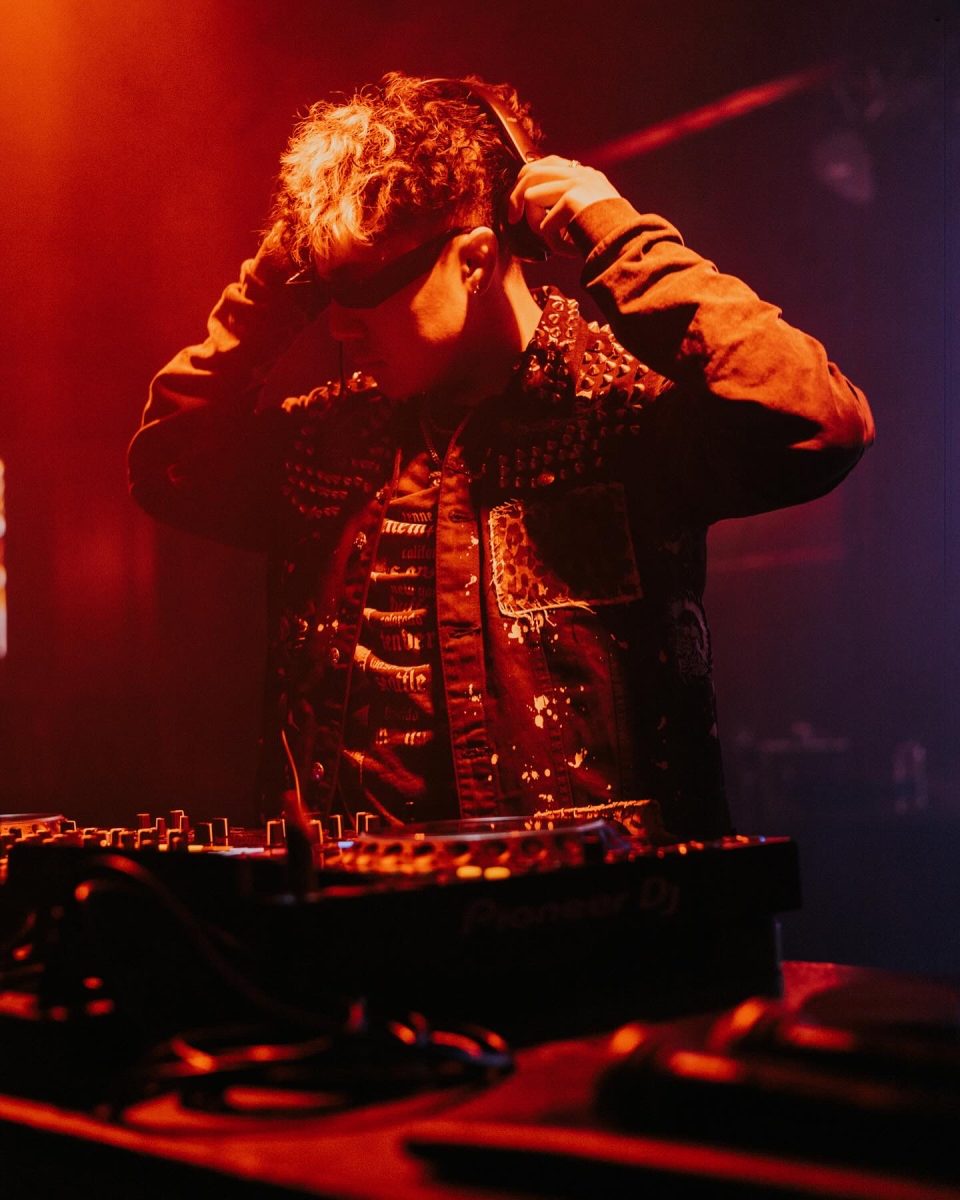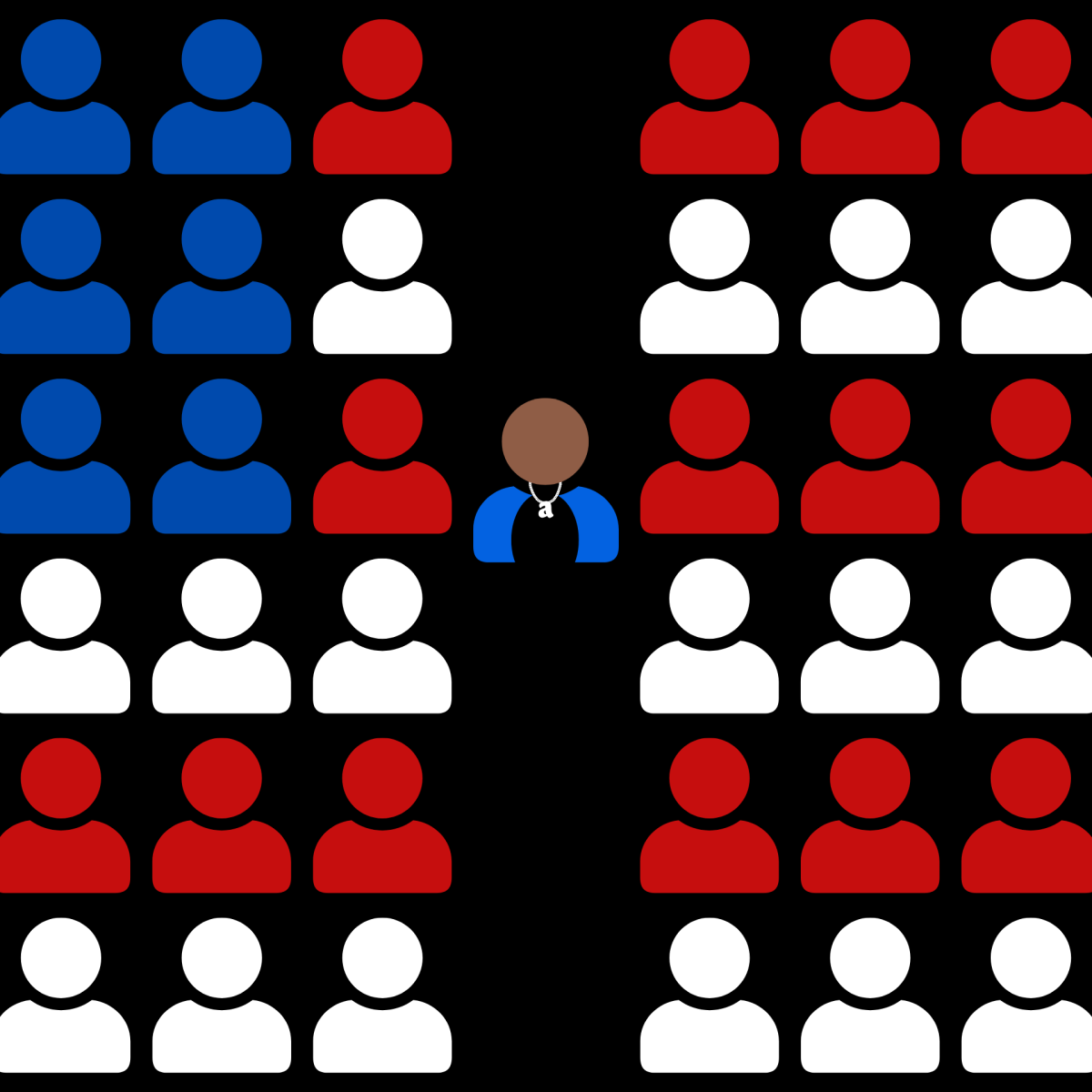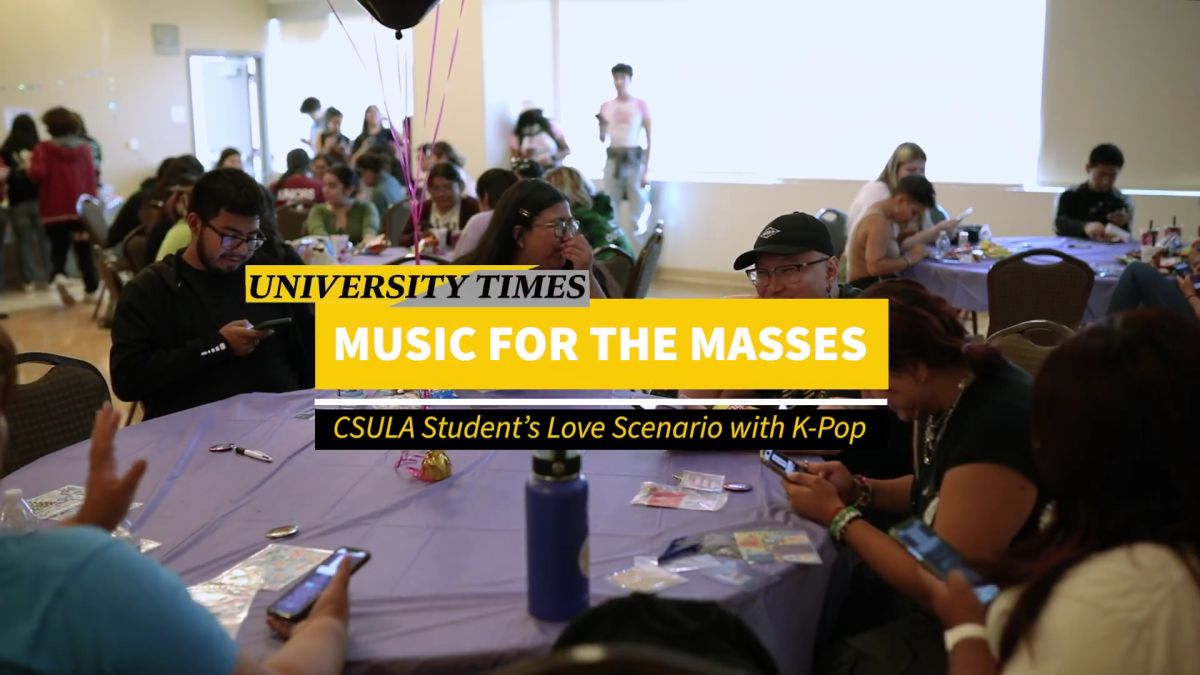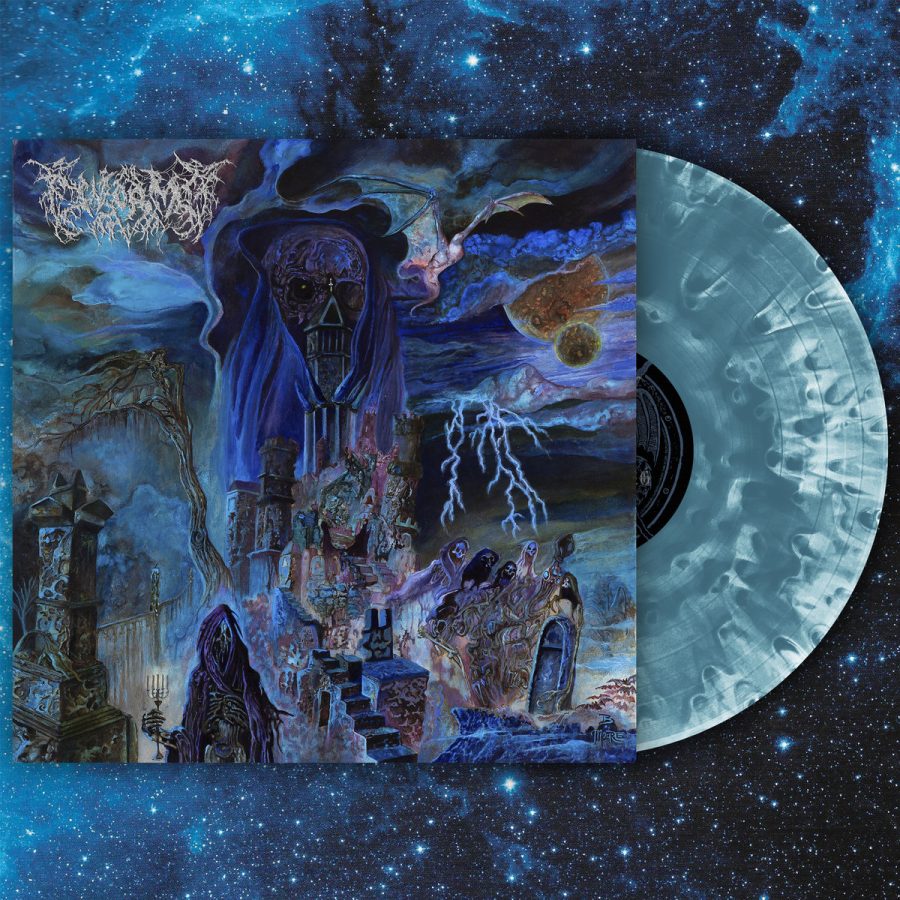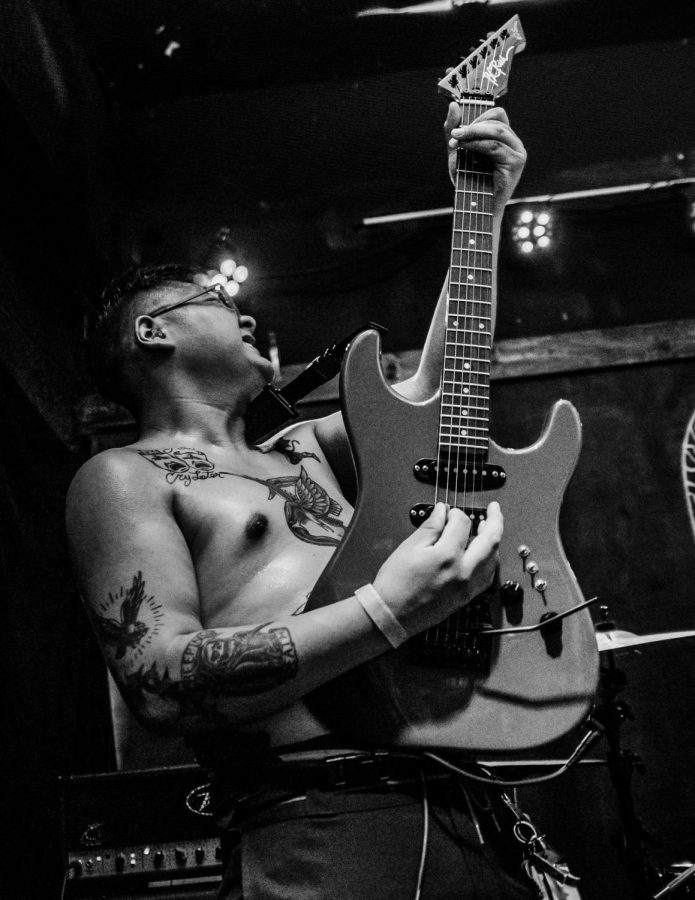A group of people pile into the open trunk of a car in Echo Park. All young people, ages between 21 and 25, are feminine presenting, wearing fishnets and their choice of graphic tees or lace with lots of eyeliner and dark lipstick. The group shares a cigarette and reapplies their makeup before they head into the club for Black Cherry’s Lesbian Goth Night.
Sunset Boulevard takes on a different demeanor at night. Past quaint bookstores and fancy ice cream shops, pink hair and red leopard print begin to materialize. Slipping away from the warm glow of street light into an enclosed space of blue and green flashing, walls littered with rock artists from a bygone era. A deep, fast bass can be felt rattling the ribcage, and a DJ whose makeup resembles Pierrot pulls the room into a trance. All the while, a dancer on stage rhythmically moves along, echoing the bass and whose demeanor matches the desolate themes.
This event has all the trappings of a Victorian wake, dim lighting, candles dripping on stage, and a procession of young people in black with accents of deep jewel tones. Enthusiasm reverberates in the room while chatter and laughter float from the outside patio.
Goth, while seemingly obvious, is a very nuanced subculture. Emerging from the death rattle of post-punk in the 70s, goth sets itself apart through a darker sound, melancholic melodies, and poetic themes considered romantic and macabre. Music that can balance themes of love and loneliness, or the joy of how everything is dreary. Its significance in a culture fully swung in the 80s with the rise of popular bands such as Siouxsie and the Banshees, The Cure, and Bauhaus.
Since its inception, the music genre and culture around it has grown and changed, but the roots are still strong. From the United Kingdom circa the late 1970s to Los Angeles in 2024, the face of this culture, although bearing many of the same aesthetics and principles, now embodies predominately young Latinx people.
Although the spirit of the subculture is very much alive, many young people in the scene may be reluctant to identify as goth. Perhaps a younger generation bears a different relationship to labels, or perhaps goth has evolved to something different. Maybe collectively, all modern-day subcultures have elevated beyond distinctive labels and cliques.
“I never saw myself as a goth until recently,” said Jennifer Lugo, a 24-year-old participant in the LA goth scene. People assume and label Lugo as goth, but she sees it as an expression of what feels right to her. While she doesn’t deny that she leans towards goth, her identity is much more expansive.
Maybe the expansiveness of such an open and accepting community makes the need to take on the title of goth in order to belong feel antiquated. Or perhaps it feels too limiting for such a diverse community.
Sam Alaniz, a 22-year-old, feels similar to Lugo. “I don’t necessarily consider myself goth, but I appreciate goth as an alternative art and a way of living.” Alaniz enjoys being a part of the gothic community, as they are welcoming. “It’s very accepting. It can be very queer … it’s not like everywhere else.”
The goth scene is not what people might assume. While it is a darker and edgier theme, the people within the community don’t reflect that. “They are the sweetest people. I don’t think I have ever met a goth person who is aggressive in nature,” said Alaniz. The people are warm and inviting, as you don’t necessarily have to be goth to go to an event. These spaces are a safe place for yourself, free from judgment.
People join the goth scene for many different reasons as it aligns with their views, trying something new, or freedom of expression.
Lugo grew up in a strict religious household and never had the opportunity to express themselves freely. So, to them, the goth scene is their space. “This is where I feel comfortable. This is where I’m going to make my space,” Lugo shares. But to others, this is a space to get as wild as they’d like with their outfits. “[I can be] as extra as I want,” said Alaniz “I really like that I get to be as out there with my makeup and clothes, it makes me feel most like myself.” It’s a way for Alaniz to express herself without limitations.
As Latinx people, the goth community has been a space for them to connect with others and be safe. However, they still face some personal challenges. “I lost a lot of support from family members. They see the community as evil and think I’ll be getting into bad stuff like drugs or addiction,” said Lugo. Joining the goth community comes with stigma from people outside of the community. To Lugo, it is either conform to what their parents say or rebel to be their true self.
This issue is not limited to Gen Z, as Gracie Pulido, a millennial, shares her reasons. “I think that there’s a strong tie between Latinos and the goth subculture because traditionally Latinos are stereotyped and viewed a certain type of way, so if you don’t fit into those stereotypes such as macho or cholo/chola, then you’re seen as a weirdo, and in the goth culture being weird or alternative, is welcomed.”
One can’t help but wonder why there is such a prominent overlap of Latinx individuals and goth culture. Lugo cites her upbringing with her family’s faith, Catholicism, as having had a role in her interest in things that are so apt within goth and contribute to her outlook on life. Growing up around cathedrals, rosaries, and a spiritual atmosphere has translated into her more darkish reverence. She says others in the community feel the same. Those who have had any experience within the Mexican catholic community can share their experiences of drinking metaphorical blood, solemn hymns accompanied by a dreary organ, and services that make you ponder memento mori, the inevitability of death.
The influence of the LA Latinx on the gothic scene enriches and diversifies the LA area and helps carry on a fundamental counterculture movement. When looking back on moments in history, what reverberates is how the counterculture reacts to society. This steady hum of this community has much to say about what makes LA truly unique and what makes the Latin American community special.

